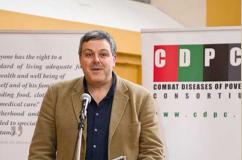Why an ageing population in Africa deserves more attention
Toggle
In the Global North, Africa and especially sub-Saharan Africa is generally portrayed as a very young place. Portrayals in development discourses often focus on young people in distressing circumstances, while more malign forces stress the young ages of migrants from this region. Demographically, the profile of these countries is still quite young, with the median age of some places still only in the high teens.
But both perceptions and present demography obscure a rapidly expanding population of older people in Africa. Tanzania is a case in point. According to the latest census, there are five million people over the age of 60 in the country, more than 4% of the population and about the entirety of the Republic of Ireland.
While this is a low proportion by international standards (especially in terms of the Global North), the picture is rapidly changing. This proportion is expected to more than double, and perhaps as much as triple, by 2050 to between 11% and 12%. To put this growth into global historical perspective, it took France nearly a century to only double its proportion of older people from 7% to 14% from the early 19th to the early 20th century. Very similar growth curves are being observed across sub-Saharan Africa, with some UN estimates predicting in excess of a quarter of a billion people over the age of 60 living in the region by 2050.
Ageing in Tanzania is part of what public health scholars call the "demographic transition". In its simplest form, the demographic transition is the movement of the majority of mortality and morbidity burden being caused by infectious diseases, which are strongly correlated to conditions of scarcity, giving way to a moment where most mortality and morbidity is caused by chronic diseases, which are highly influenced by lifestyle.
Of course, this transition in reality is not so cut-and-dried. Like many other countries in the Global South, Tanzania is still dealing with a substantial burden of infectious diseases, even as chronic diseases have emerged as leading causes of morbidity and mortality, as a consequence of an increasing cohort in middle-age, while an older demographic segment continues to grow. This changing population profile is, in fact, part of the (often-ignored) success story of earlier moments in "development".
The achievements of the Independence Generation of the 1960s, alongside the positive influence of foreign aid, impacted population dynamics in countries like Tanzania. There was a dramatic expansion in survival in the early years of life, thus increasing the number of adults, which is now being seen in a growing cohort of older people. Indeed, the population of people over 60 would be even higher in east and south Africa today if this generation had not been so cruelly impacted by HIV in the 1980s and 1990s, while suffering what can only be called a blockade by Northern pharmaceutical companies of effective AIDS treatment between 1995 and 2005.
The result of this history is a rapidly expanding population of older people that both national and international policymakers need to engage. As local scholars, such as Mpoki Mwaikokesya, have pointed out this increasing population of older people has significant policy impacts, from the distribution of health resources through implications for social, transport and gender policies (the estimate is that the majority of the older population will be older women living in rural areas, which tend to be underserved because of weak infrastructure).
While much more social research is necessary, such preliminary data already suggests some spaces for the judicious application of technology to intervene in support of healthy ageing, a leveraging of the market potential represented by tens of millions of older people for industry, and renewed consideration of how infrastructural investment can support this population.
Our workshop in June at the University of Dar es Salaam explored the challenges and opportunities that an ageing population presents to sub-Saharan Africa. This included such issues as the delivery of formal and informal care, urban and spatial planning and shaping the relationship between generations. This is an area of global health where there are more similarities than differences between North and South. Thus, some of the lessons learned in Europe, North America and Japan are likely to be applicable in Africa, and, at the same time, some of the ways that technology is deployed in these poorer countries may well have applicability in the Global North in terms of economically scaling up successful interventions.
It is high time that these changing demographics in sub-Saharan become a priority on International Development Agendas, as they will impact nearly all aspects of life in these societies. Representatives of various NGOs in the workshop underscored such connections (and future anxieties), as many of them had personal experience of caring for the older generation, while still providing help for the generation coming up behind. One woman, a professional working in Dar es Salaam, made the telling observation that she has four other siblings who share the burden of caring for their increasingly dependent mother. "We are managing," she mused, "but I have only one child, and I wonder how she will manage when I am old."
We are now only at the beginning of a conversation exploring how sectors, disciplines and stake-holders can leverage strengths and shore up deficits to build a just and equitable social environment for healthy ageing in Africa. Universities are well-placed to foster such connections, understand the complexity of ageing within different cultural contexts, and pioneer innovative solutions.
This piece originally appeared on RTÉ Brainstorm
